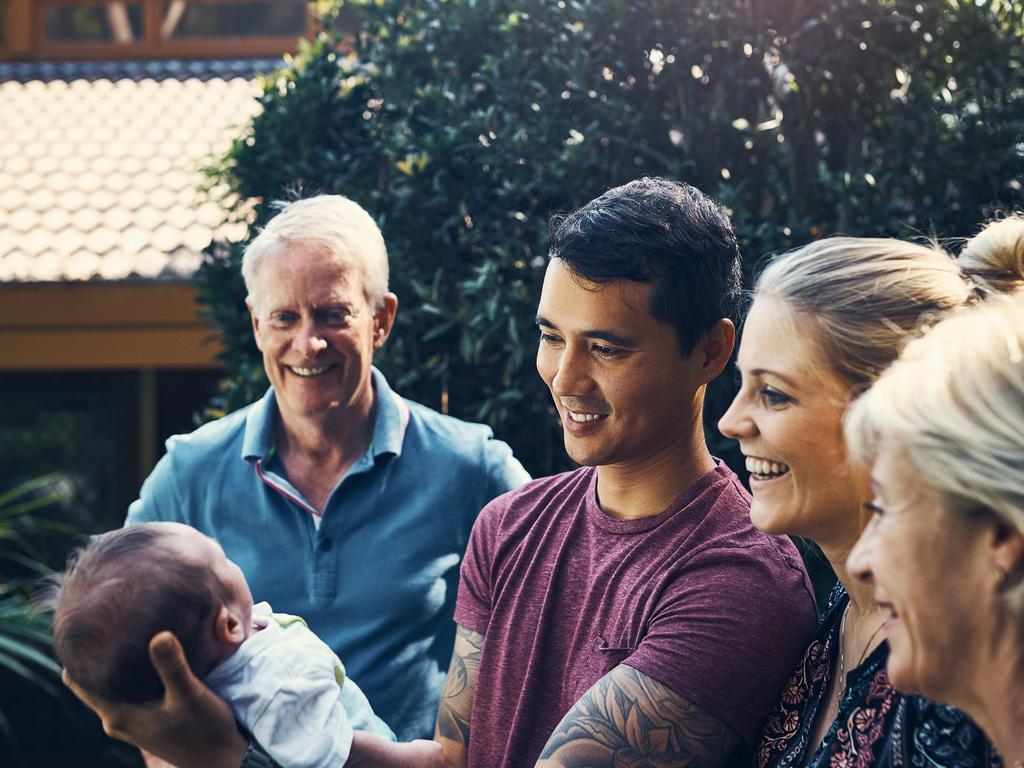Regional exodus breaks baby drought
A slight rise in Australia’s national birthrate is not enough to cope with the ageing population, but does indicate that a move to the regions has prompted more couples to have families.

Australian birthrates have increased for the first time in four years, with those who moved to the regions during Covid now having children and slowing the rate of ageing in Australia’s population.
The national birthrate has bounced back from last year but is still below pre-pandemic levels, with cost of living and prohibitively expensive housing deterring those in the cities from starting or expanding their families.
Outside the major cities, the birthrate spiked, with 94,000 regional births in the past year — up 3.9 per cent from 2023.
“Rising rents, mortgage payments and childcare costs in the metro areas are putting a handbrake on people’s plans to start or grow their family,” KPMG urban economist Terry Rawnsley said.
“Regional communities are continuing to emerge as popular places to live, work and raise a family, with affordability now top of mind for many Australians.”
Each state saw a strong regional rise in birthrates last year – capital cities excluded – compared with 2023.
Western Australia had the highest increase of 8 per cent, recording 6780 births, compared to 6.4 per cent with 17,580 births in Victoria; NSW jumped 3.1 per cent, reporting 32,570 births.

Queensland recorded 29,650 births and South Australia reported 3920 – a 2.9 per cent spike in births for both states.
Mr Rawnsley said the surge of births outside the cities was a result of people migrating to the regions after the pandemic, where lockdowns inspired them to seek a quieter lifestyle. “These regions are now feeling the long-term benefits of that migration as their relative affordability has allowed them to retain those people who have put down roots and are starting families,” he said.
The baby boom reached record numbers in Geelong and Newcastle, with the Victorian city reaching its highest number of births on record – 4120 births, a 7.6 per cent increase.
Newcastle reported 8130 new babies, a 4.6 per cent rise.
Other regional cities such as the Gold Coast returned to birthrates that were consistent with pre-Covid trends.
The data reflected the economic pressures of city living in Sydney and Melbourne, where despite a slight rise in birthrates, the average number of children over a woman’s lifetime has declined. Sydney’s fertility rate sat at 1.54 babies per family, just above the national average of 1.51, and Melbourne plunged to the lowest rate among major cities at 1.40.

The Sunshine State’s capital, however, boasted a fertility rate of 1.58, the highest on Australia’s east coast, reinforcing the fact that Brisbane continues to attract more families from Sydney and Melbourne because of affordability factors.
In all cities, a strong correlation was found between housing size and birthrates, with the larger homes of the outer suburbs often being the “perfect place to raise a family”, Mr Rawnsley said.
Sydney’s western suburbs of Schofields, Marsden Park and Oran Park; Melbourne’s greenfield suburbs like Mickleham, Rockbank, Wollert; and Brisbane’s outer suburbs like Redbank Plains, Boronia Heights and Murrumba Downs offered “the same amenities as suburbs closer to the city, for just a fraction of the price”, such bigger backyards, more space and larger homes.
Overall, Australia totalled 292,500 births in 2024, a recovery of 2.6 per cent, but that number is still far from what is needed to sustain the country’s population growth. “The baby bounce back is absolutely on, with the birthrate set to reach 300,000 over the next year,” Mr Rawnsley said.
“However, it will still be some time before we exceed the magic 350,000 figure needed to sustain our way of life well into the 21st century.”



To join the conversation, please log in. Don't have an account? Register
Join the conversation, you are commenting as Logout